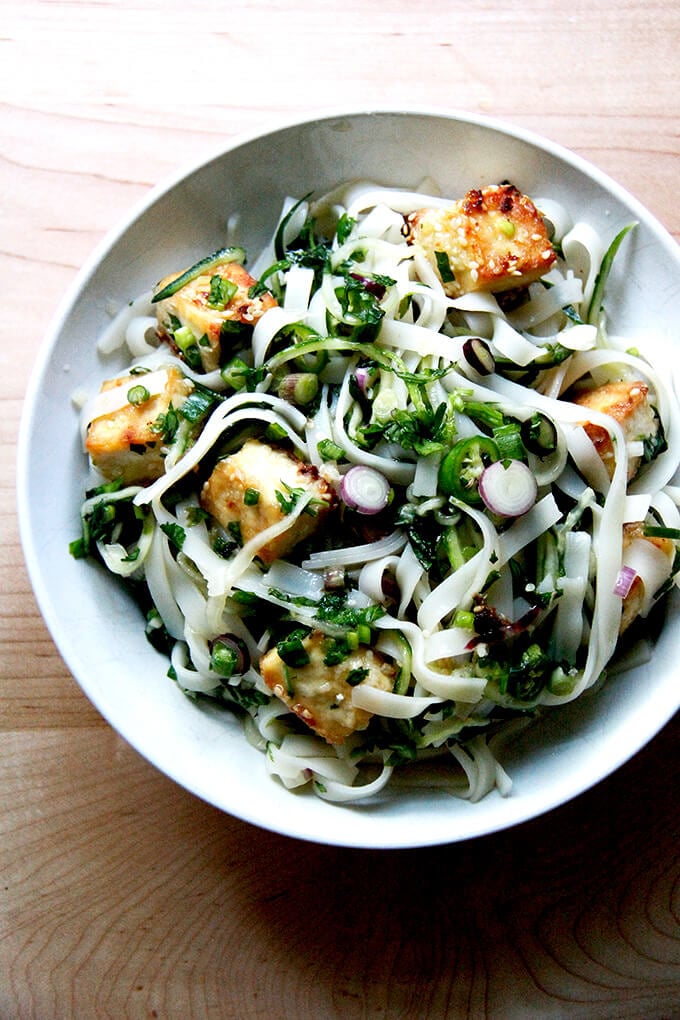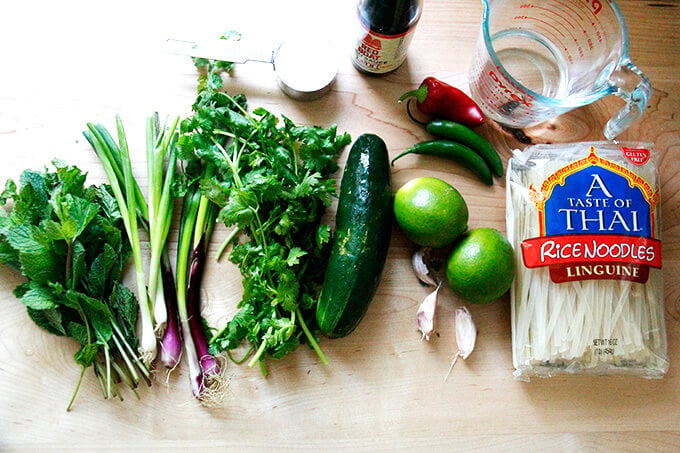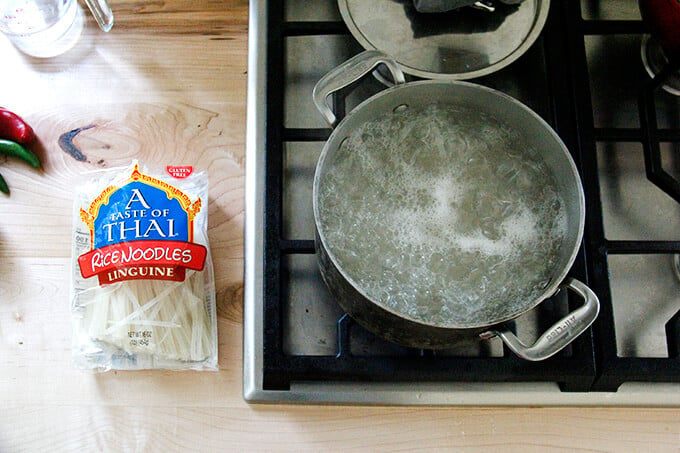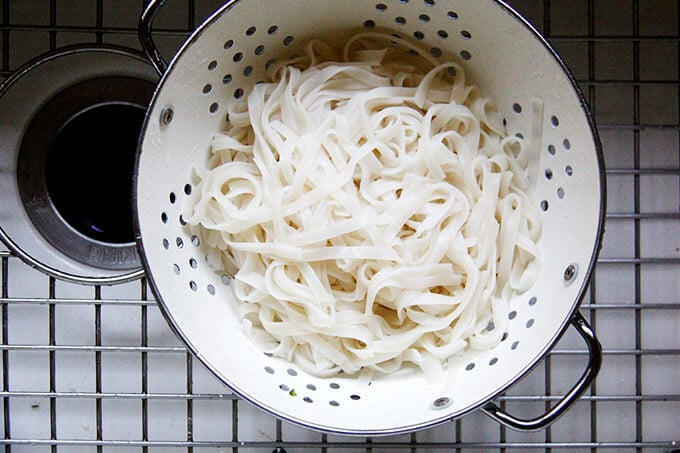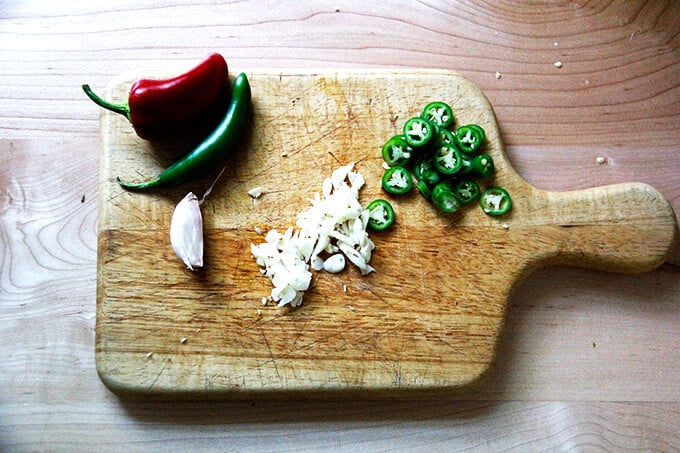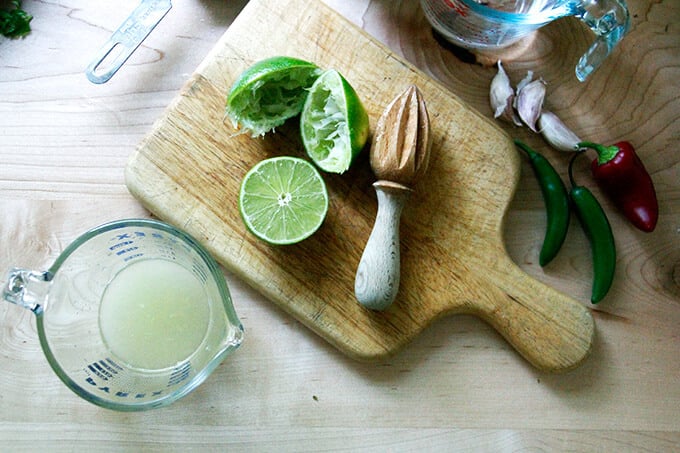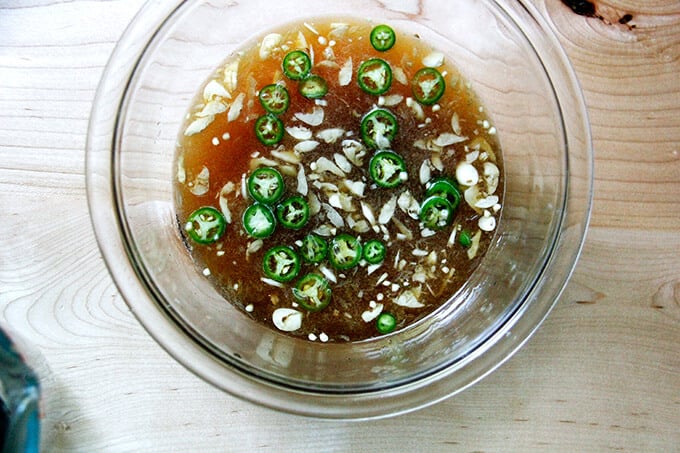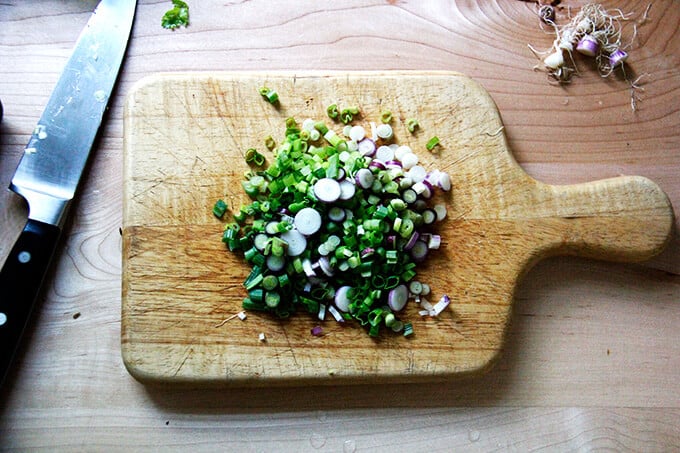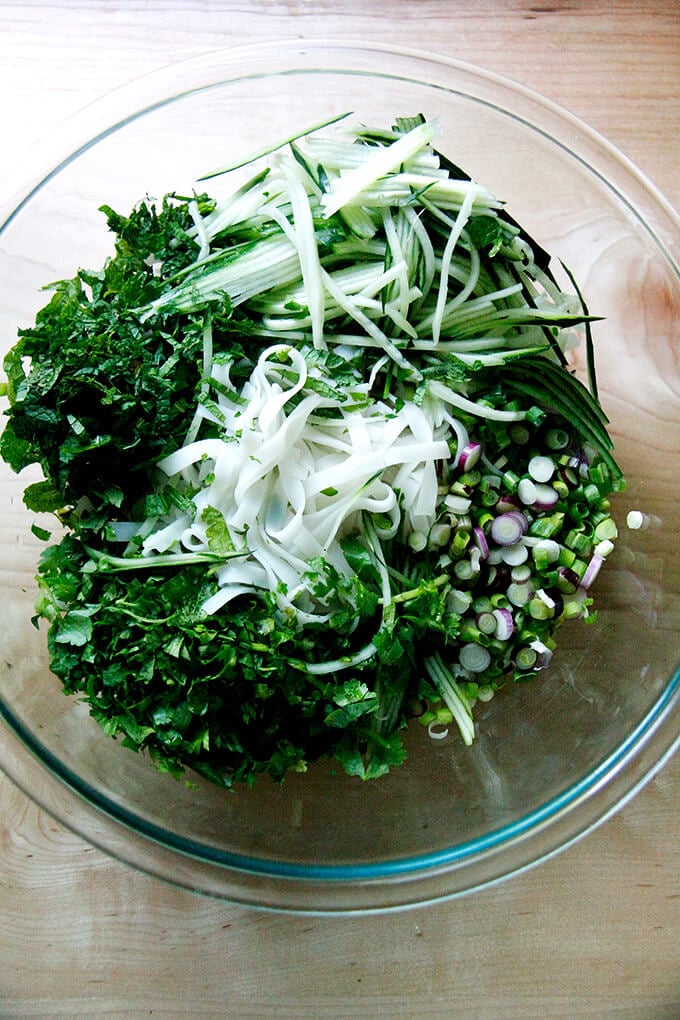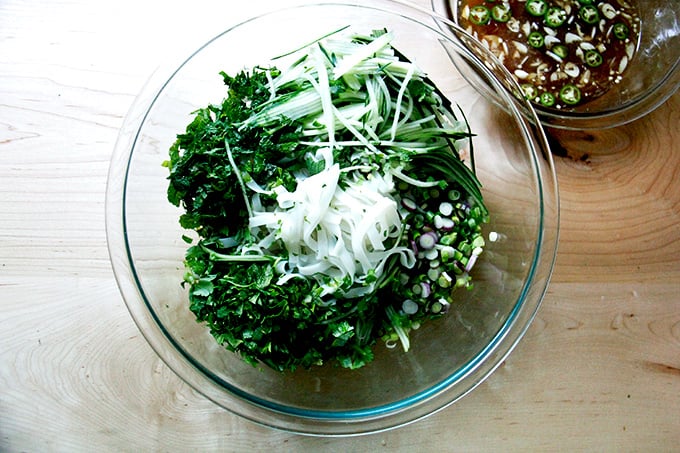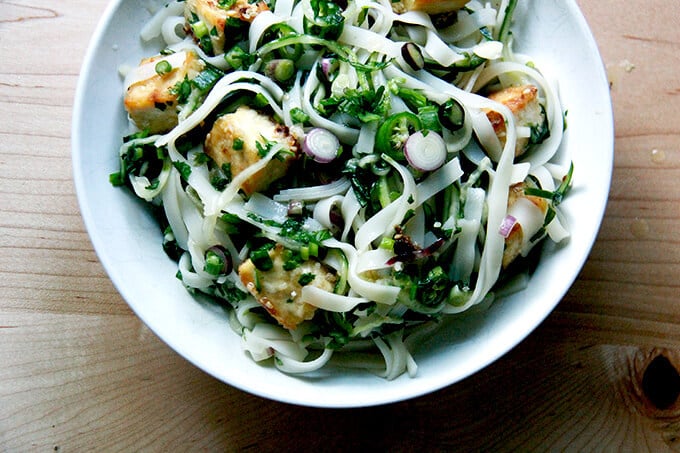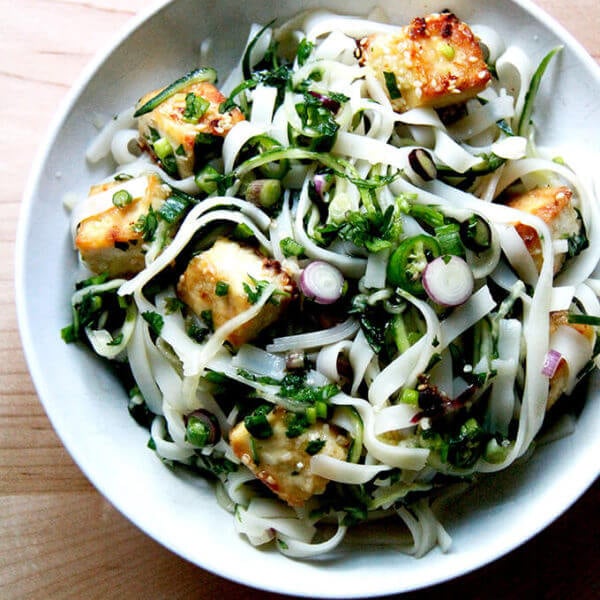When the heatwave hit earlier this week, I craved these noodles. I first ate them years ago while working at Fork, where the chef, Thien Ngo, would whip them up for lunch almost daily during the hottest weeks of the summer. We would eat them on the little back patio, an oasis of peace and cool, where they disappeared in no time, Thien’s always with a glass of wine “for digestion.” Those noodles were so. damn. good. This is partly because Thien always used fresh rice noodles, which he purchased from a shop called Ding Ho near Reading Terminal Market, where they were made daily and sold in large sheets, folded and wrapped in oily cellophane to prevent them from drying out. If Thien ever disappeared midmorning, chances were he had snuck out on his bike to pick up the noodles, which he stashed in the plastic take-out bag on the shelf beneath his work station. I always marveled at how efficiently Thien worked. Before chopping an herb or slicing a vegetable, he would throw a sauté pan over a burner set over low heat to warm up, ready for anything he might need to crisp or cook. And in no time, all of the other elements would materialize: the dressing, nuoc cham, the spicy, sweet, sharp condiment ubiquitous at nearly every Vietnamese meal; the chopped herbs, a mix of cilantro and Thai basil; the julienned vegetables, often cucumbers and carrots; and some sort of meat, often shrimp, which he would throw into his warm pan, heat now cranked to high, with oil, garlic and chilies. When everything was ready, he unwrapped the noodles, sliced them into wide strips, and piled them into bowls. He then topped each heap of noodles with the various herbs, vegetables and meat, before pouring the dressing over top. He never tossed everything together all at once—we tossed with chopsticks as we ate, which kept the vegetables crisp and the herbs fresh. These noodles made me sweat—Thien made the nuoc cham very spicy—but somehow I always finished feeling refreshed. With every heatwave we get, I think of these noodles, and Thien, too, who sadly is no where to be found. Thien was often difficult to work for, and he had issues, the extent of which I never learned, but there was so much good, too—good stories, good food, good drink, and really, really good noodles. Here’s to that. Here’s a visual how-to guide: Cook the rice noodles for 4-6 minutes or according to package instructions. Drain and rinse under cold water. For the nuoc cham, chop garlic and chilies: Add fresh lime juice… … along with sugar, fish sauce, and water. Slice scallions and toss with … … the cooked noodles, chopped herbs, and julienned cucumbers.
Toss noodles with nuoc cham and protein of choice, see recipe for details. 4.8 from 5 reviews If you like video, you can watch a how-to in Instagram stories. Notes: Nuoc cham is a spicy, sweet, sharp condiment ubiquitous at nearly every Vietnamese meal. When using it as a dipping sauce, as here, you can omit the water. In place of shrimp or other meat (see story above), I made Sarah Jampel’s crispy sesame tofu on Food52 ages ago and absolutely loved it. I adjusted the recipe here slightly for simplicity: instead of using 2 teaspoons soy sauce, I use 2 teaspoons of the nuoc cham dressing, and I omit the sesame oil. If you wish to follow her original recipe, do so here. For some visual guidance on pressing tofu, see this post. If tofu isn’t your thing, grilled or sautéed shrimp would be delicious as would really any protein you like: I’d serve them with grilled chicken thighs, skirt steak, or pork tenderloin, to name a few. I like to slice cucumbers on a mandoline, but if that scares you, simply slice them thinly using your knife. Carrots or radish or daikon would all be nice here, too. A sprializer is a good tool for this as well and also less scary than using a mandoline.
